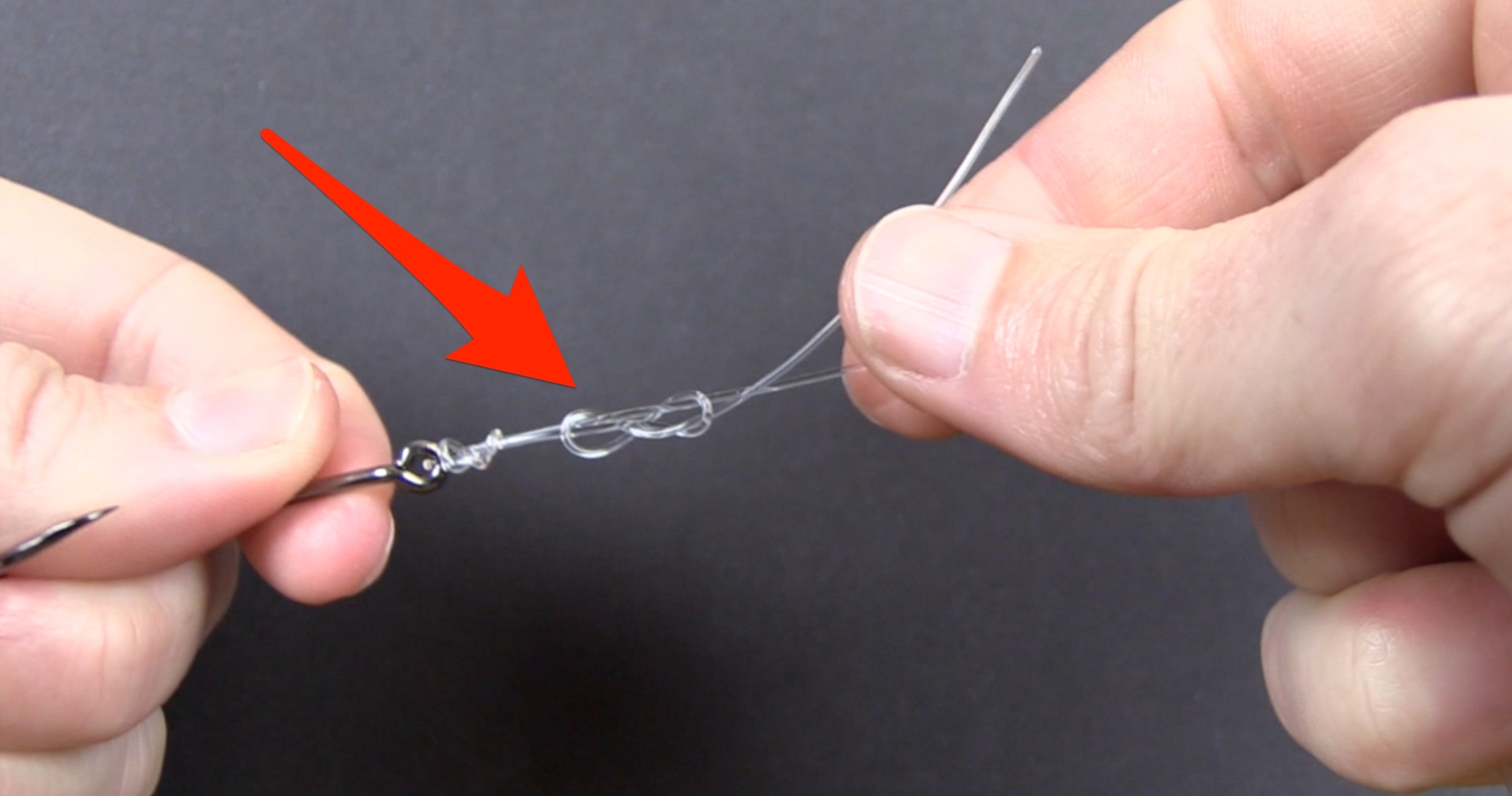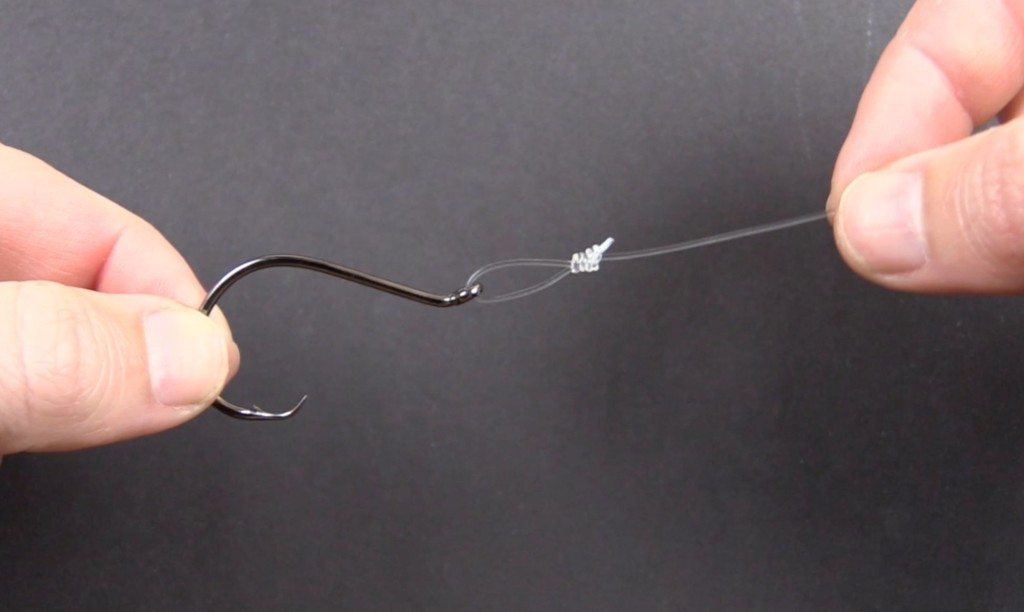How To Tie The Double Figure 8 Loop Knot [REVIEW]
- By: Luke Simonds
- on
- Found In: Fishing Knots, Fishing Tips, Terminal Knot (Loop)

It’s Loop Knot time!
Have you tried the Double Figure 8 Loop Knot yet?
It sure impressed the heck out of me in a knot strength test that I did this afternoon…
To be honest, I rarely use the Double Figure 8 because I am such a fan of the super-strong Kreh Loop Knot (see how to tie the Kreh Loop knot here), but the results now make this Figure 8 knot tough to ignore.
Let me explain.
But first…
Why use loop knots?
Loop knots are considered some of the best knots to connect leaders to most lures and hooks because they allow the bait to have the most action in the water (aka, a loop knot allows the lure or hook to move freely around the loop of the knot).

And the only real downfall about loop knots is that they have a lower breaking point than knots that tighten around the eye of a lure/hook, so it is smart to spend some time finding the optimal option for your specific needs.
Double Figure 8 Loop Knot Review
This knot really peaked my interest when I first saw it because its use of the double overhand knot at the very beginning was a fantastic idea…
All of the prior loop knots similar to this (Rapala Loop and Non-Slip Loop… aka – Kreh Loop) used just a single overhand at the beginning and it seemed logical that the double would help spread the tension load allowing for a higher breaking strength.
Here’s a short video showing how to tie the Double Figure 8 Loop Knot:
Double Figure 8 Loop Knot Strength Results
I did some strength testing on this Double Figure 8 Loop knot earlier today and was very impressed with how it performed.
First, I tested the knot using traditional monofilament line against the winner of my first loop knot contest (the Rapala Loop knot tested out as the top choice in my first knot contest).
And in 3 head to head tests against the Rapala knot, the Double Figure 8 won 2 of them…
Most impressively, the breaking points in the 3 tests were all over the listed breaking strength of the line… I was using 30 lb Berkley Big Game mono and the breaking range on all 3 tests were in the 30 to 33 lb range.
Next, I performed the same test on 30 lb fluorocarbon line and the results weren’t quite as impressive…
The Rapala Loop knot won all 3 bouts and the breaking range was significantly lower… in the 16 lb to 20 lb range.
Conclusion
The Double Figure 8 Loop Knot can be a very good choice given the following:
- It is very easy to tie
- It forms a very straight loop
- It has good holding strength
However, I’m personally going to pass on switching over to it because it leaves a tag end that points up (making it prone to snagging floating debris), and its breaking strength was so lower compared to the others when using fluorocarbon (which I use often).
I’ll do some more detailed testing later this quarter to try to determine why the results were so much lower with fluorocarbon.
But for now I’ll be sticking with the Non-Slip Loop knot (aka – Kreh Loop knot) because it’s quicker to tie, the tag end points down, and it’s still stronger than my 10 lb main line when tied on a 30 lb leader.
Go To Our Knot Testing Homepage [Full Knot Rankings]
Related categories:
STOP WASTING TIME ON THE WATER!
Do what the “SMART ANGLERS” are doing and join the Insider Club.
Here’s what you’ll receive today when you join:
- Weekly fishing reports and TRENDS revealing exactly where you should fish every trip
- Weekly “spot dissection” videos that walk you through all the best spots in your area
- Exclusive fishing tips from the PROS you can’t find anywhere else
- Everything you need to start catching fish more consistently (regardless if you fish out of a boat, kayak, or land).










I thought this would be difficult to tie, but it’s knot. Good video
This is a version of the Homer Rhode Loop Knot. I’ve used this connection for over 20 years guiding clients fly fishing in Guam, R.I. and SW Florida. This knot allows the fly to move freely providing more action & more strikes. P.S. we also use this fishing with lures to provide more lure action. This is a strong knot when tied correctly. I do it a little differently. After you slowly draw the figure eight down by pulling on the tag end of the line only tie 1 simple over hand knot around the standing part of the line (not 2 like in your video) and draw the figure 8 knot up against the single overhand knot. You may find increased knot strength. The other advantage is with that with heavy shock tippets/leaders the knot is much easier to tie using just the single overhand knot as the last step.
I agree with Capt. Bob!! I’ve been tying the same know for over 20 years too – on the end of a tippet….. and anywhere else I need an increase in action on the fly or lure. Way back when I had access to a mechanical stress/stain line pulling machine, this knot clearly demonstrated it’s overall strength!
The single overhand is all that’s needed to complete the know, it’s nearly impossible to tie the heave shock tippets with that second figure 8 overhand that completes the knot.
I also use this modification with heavy tippets. Another advantage is that when tied in 60 or 80 pound tippet this knot tends to sit vertically and perpendicular to the hook eye allowing a large tarpon fly track really straight and true.